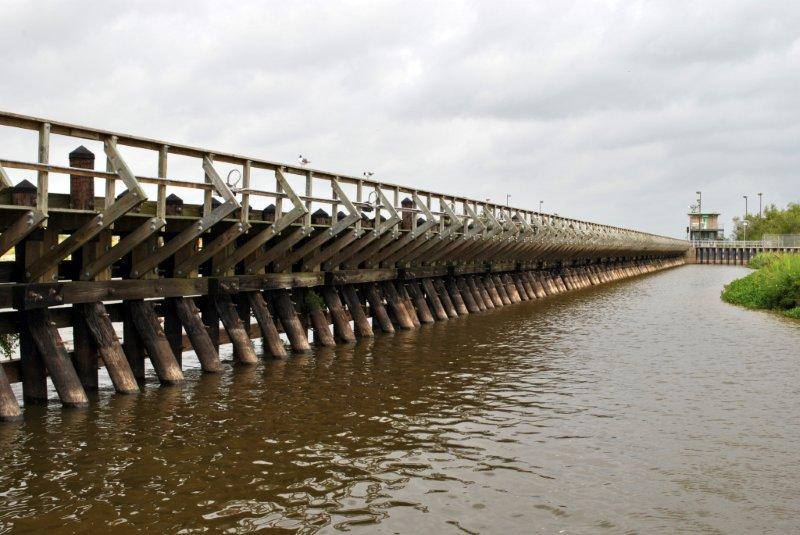
Project Purpose: The Wallisville Lake Project was originally authorized by Congress for five purposes: navigation, salinity control, water supply, fish and wildlife enhancement, and recreation. These purposes are still current today even though the Project is much different now than originally conceived. The Trinity River is navigable by pleasure boats from its mouth and north as far as Liberty, Texas. The Galveston Bay area shrimp fleet utilizes the Trinity as safe harbor during major hurricane events. The Wallisville Lock and Dam and Structure A provide for salinity control by opening and closing depending on tides, river flows, winds, and drought conditions. The Trinity River is a major source of water for the Houston metro area, for several smaller communities, and for irrigation canal districts in both Liberty and Chambers Counties. Unlike most other Corps projects, Wallisville has no impounded reservoir so the bottomland forests, grasslands, streams, marshes, swamps, and pools are still preserved as natural habitats for a wide variety of fish and aquatic animals. Depending on tides and fish movements, anglers could find marine species one day and fresh species the next. Birds, such as colonial waders, shore birds, waterfowl, songbirds, and raptors call Wallisville home for breeding, wintering, or temporary residence during migration. Mammals large and small find forage and shelter in the grasslands, forests, and swamps. And we must not forget our large reptile, the American alligator. Except for the coldest part of the winter, visitors can expect to see alligators, sunning along stream or pool banks, or swimming in the Project’s waters. Parks, Recreation Areas, and the Visitor Center provide opportunities for picnicking, hiking, birding, primitive camping, fishing, canoeing and kayaking, and other activities for visiting families. Fishing can be enjoyed year-round and during waterfowl season hunters can try their luck and aim on the many waterfowl that migrate through the project.
Project History: Efforts to construct a saltwater barrier and/or reservoir at Wallisville on the Trinity River began in 1952. Congress first authorized the construction of the project through the River and Harbor Act of October 22, 1962. The government purchased the property and construction began in 1966. At this point, the project would have been a 19,700 acre reservoir with surface elevation of four feet above mean sea level. A contract for water supply, salinity control, and recreation was signed between the U.S. Army Corps of Engineers, the Trinity River Authority, the Chambers-Liberty Counties Navigation District, and the City of Houston and was approved by the Secretary of the Army on February 2, 1968. In September 1971, a lawsuit was filed by the Sierra Club in U.S. District Court against the construction of the project. At approximately 72 percent complete, the construction was halted in 1973 by a summary judgment decision of the court. Between 1973 and 1987 the project was revised and reevaluated. And in May of 1987 the Fifth Circuit Court of Appeals dismissed the lawsuit in favor of the government and lifted the injunction against continuing construction. Then in November of 1989 a pair of nesting bald eagles was discovered near Miller Lake and the project was reevaluated again. It was this reevaluation that gave rise to the project as it stands today: a set of levees along the east and west banks of the Trinity in conjunction with the dam across the Trinity, the navigation lock and engineered navigation channel, the gated control structure on main stem of the Trinity, Structure A in the Cut-Off near Pickett’s Bayou, Structure B at the head of Lost River, and our parks and recreation areas. The original 39,000 feet long concrete dam structure across the marsh was abandoned after it was breached in 2001 to allow for normal water flows of the Old River and several smaller streams and bayous. Cedar Hill Park was completed in October 2000 and is leased to Chambers County for operation and maintenance. The JJ Mayes Wildlife Trace was opened to the public in May 2003. Hugo Point Park was opened in August 2003 and is leased to Chambers County for operation and maintenance.